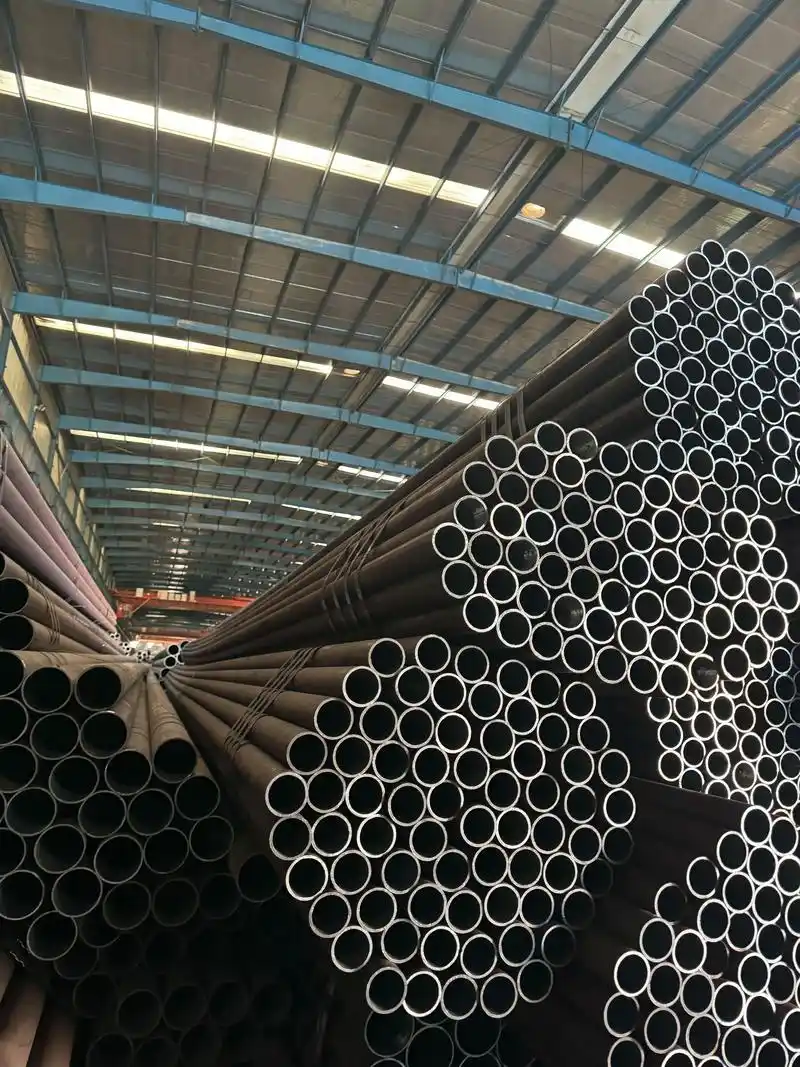4171104116
Product Number: 4171104116
HITS: 456 DATE: 2025/4/17
SPECS: complete in specifications
PRICE: Bargaining
UNIT: TON/MT
PLACE: China
Description
Seamless steel pipes have hollow cross-sections and are widely used as pipelines for conveying fluids, such as pipelines for conveying oil, natural gas, coal gas, water and certain solid materials. Compared with solid steel such as round steel, steel pipes have a lighter weight when the bending and torsional strength is the same, and are an economical cross-sectional steel. It is widely used to manufacture structural parts and mechanical parts, such as oil drill rods, automobile drive shafts, bicycle frames, and steel scaffolding used in construction, which can improve material utilization, simplify manufacturing processes, save materials and processing time, and has been widely used for steel pipes. Production process report editing ① Main production processes of hot-rolled seamless steel pipes (main inspection processes): Pipe blank preparation and inspection → Pipe blank heating → Perforation → Rolling pipe → Steel pipe reheating → Fixing (reducing) diameter → Heat treatment → Finishing pipe straightening → Finishing → Inspection (non-destructive, physical and chemical, and stage inspection) → Into the warehouse ② Main production processes of cold-rolled (pull-out) seamless steel pipes: Bill preparation → Pickling lubrication → Cold rolling (pull) → Heat treatment → Straightening → Finishing → Inspection The general production processes of seamless steel pipes can be divided into two types: cold drawing and hot rolling. The production process of cold-rolled seamless steel pipes is generally more complicated than hot rolling. The pipe blank must first undergo three-roll continuous rolling, and a sizing test must be carried out after extrusion. If the surface does not respond to cracks, the circular pipe must be cut by a cutting machine and cut into a blank with a length of about one meter. Then enter the annealing process. The annealing must be pickled with an acidic liquid. During the pickling, you should pay attention to whether there is a large amount of bubbles on the surface. If there is a large amount of bubbles, it means that the quality of the steel pipe does not meet the corresponding standards. In terms of appearance, cold-rolled seamless steel pipes should be shorter than hot-rolled seamless steel pipes. The wall thickness of cold-rolled seamless steel pipes is generally smaller than that of hot-rolled seamless steel pipes, but the surface looks brighter than thick-walled seamless steel pipes, the surface does not have much roughness, and the diameter does not have too many burrs. The delivery status of hot-rolled seamless steel pipes is generally hot-rolled and delivered after heat treatment. After the hot-rolled seamless steel pipes have to be strictly hand-selected by the staff after quality inspection, the surface must be oiled after quality inspection, followed by multiple cold drawing experiments, and after hot-rolling treatment, the perforation experiment must be carried out. If the perforation diameter is too large, straightening and correction must be carried out. After straightening, it is transferred to the flaw detector by the conveying device for flaw detection experiments. Finally, it is labeled, arranged in specifications and placed in the warehouse. Round tube blank → Heating → Perforation → Three-roller oblique rolling, continuous rolling or extrusion → Pipe off → Scale (or reduction diameter) → Cooling → Straightening → Water pressure test (or flaw detection) → Marking → Inlet seamless steel pipe is made of steel ingots or solid tube blanks through perforation and then made by hot rolling, cold rolling or cold dialing.




